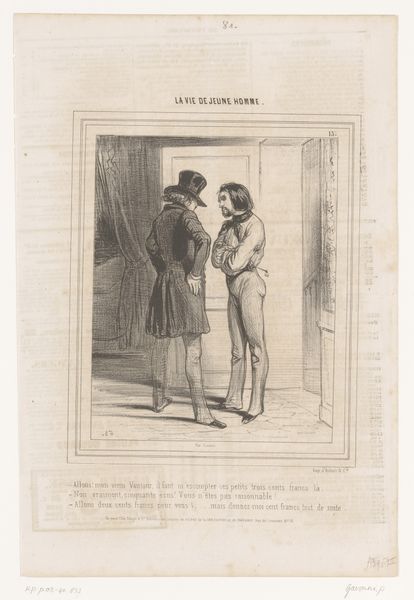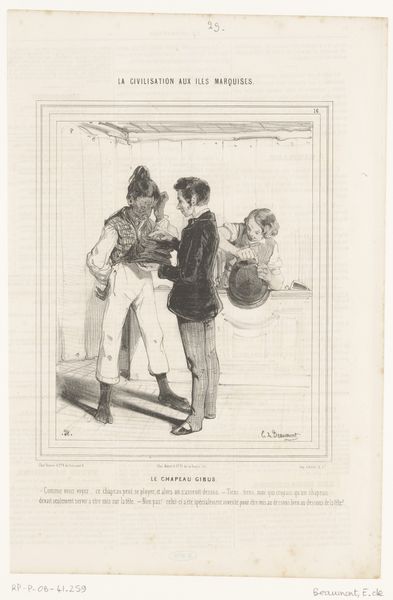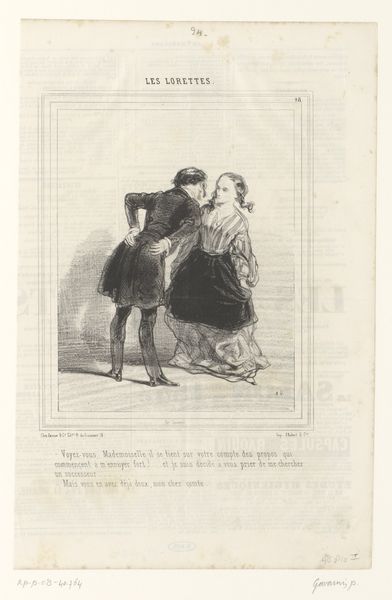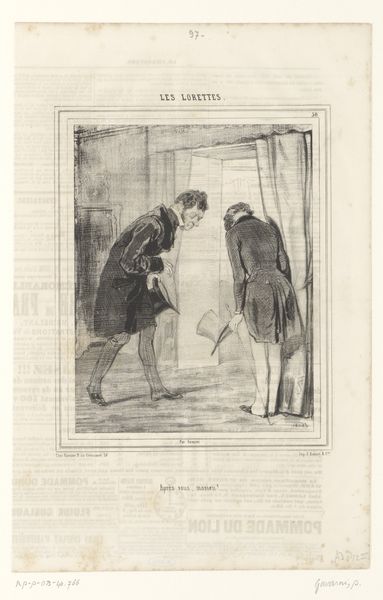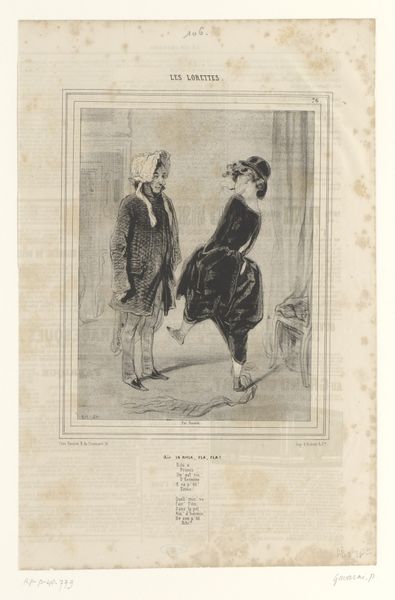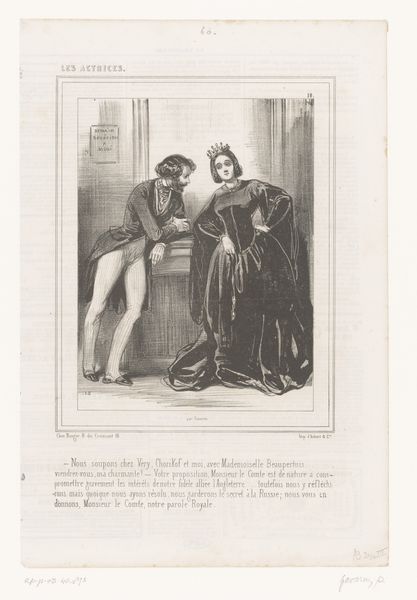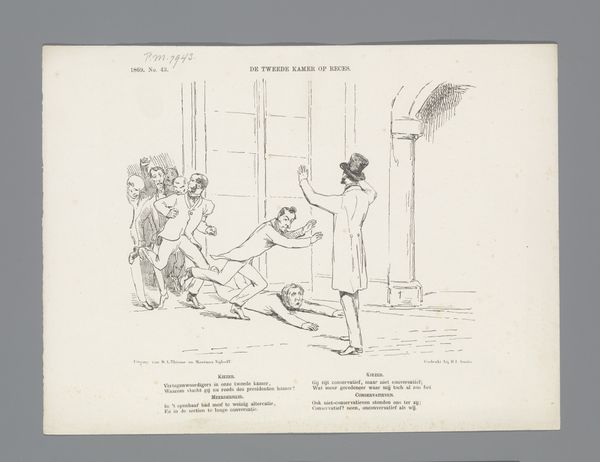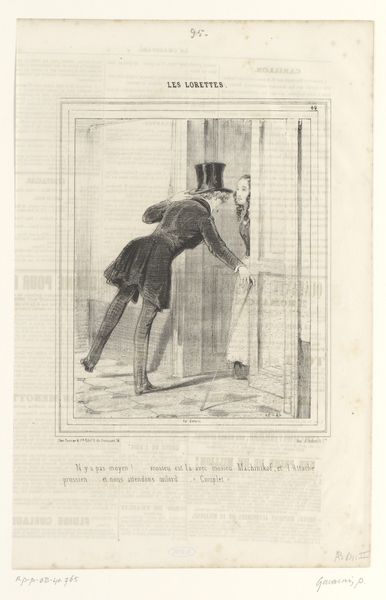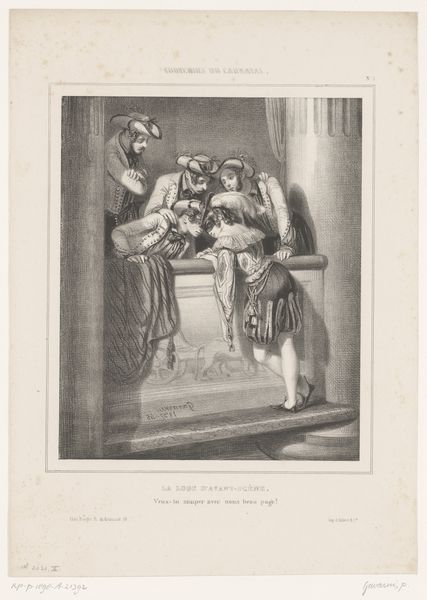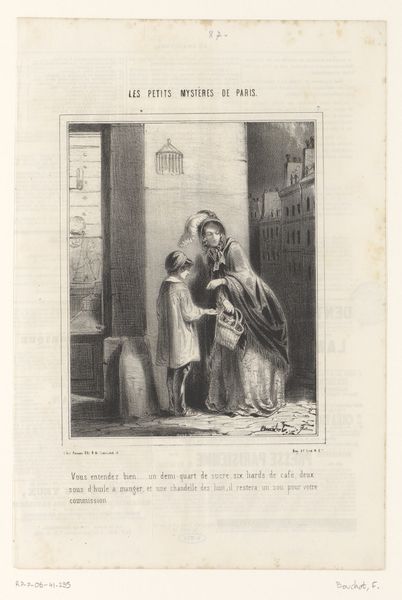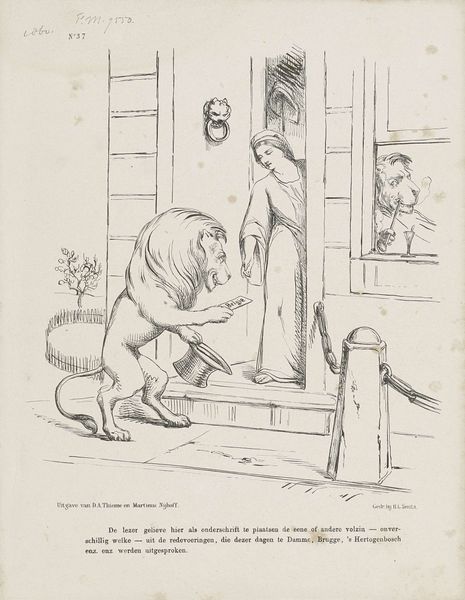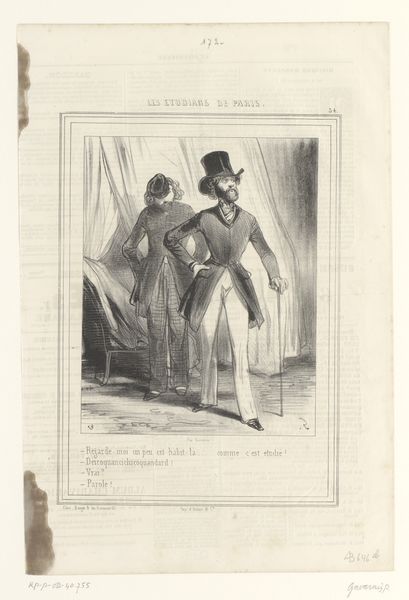
lithograph, print, etching
#
portrait
#
narrative-art
#
lithograph
# print
#
etching
#
caricature
#
romanticism
#
19th century
#
genre-painting
Dimensions: height 357 mm, width 245 mm
Copyright: Rijks Museum: Open Domain
Curator: This lithograph and etching by Frédéric Bouchot, created around 1838, is titled "Werkster doet de deur open voor twee dronkenmannen," which translates to "Cleaning Lady Opens the Door to Two Drunk Men." What’s your first take? Editor: Stark tonal contrasts guide the eye to the central figures. The light etching feels deliberately coarse to create that blurry feeling one experiences after a night of heavy drinking. Curator: The scene, captured by Bouchot, brings into focus the domestic space as a site of potential disruption caused by the inebriated. It reflects societal anxieties surrounding class, gender, and morality of the period. How are we to understand the maid’s gaze, as one of horror or familiarity? Editor: Good question. I notice the strong diagonal lines pulling up to the open door which create an intentional visual imbalance, suggestive of the unsteady state of the two men and the precarious situation the maid finds herself in. The subtle textures achieved through the lithographic process create an atmospheric sense of impending chaos. Curator: Absolutely, the composition underscores the power dynamics. The men's disheveled state, contrasted with the maid's composed uniform, speaks to the vulnerabilities of women working in domestic roles and broader societal indifference toward their well-being. Editor: Also note how their black dress contrasts against her white cap. The white space around each subject feels different depending on who occupies the space, furthering that sense of social unrest. Curator: It is this artistic tension—the social commentary embedded in what might seem like a simple genre scene—that invites the viewer to consider how marginalized figures are implicated within broader historical narratives of gender and class exploitation. Bouchot masterfully uses caricature here not just for humor but as a tool to expose uncomfortable truths about society. Editor: Precisely. Analyzing the visual vocabulary – the linework, the composition – reveals a keen awareness of the emotional and psychological undercurrents. These weren’t just drunkards: the image acts like a mirror of broader society. Curator: In the end, Bouchot urges us to confront the unspoken biases of 19th-century France. His image is both funny and horrifying because we're implicated, as the artist, in the drunkards' behavior. Editor: A brilliant display of both form and subversive sentiment. A lasting critique indeed.
Comments
No comments
Be the first to comment and join the conversation on the ultimate creative platform.
